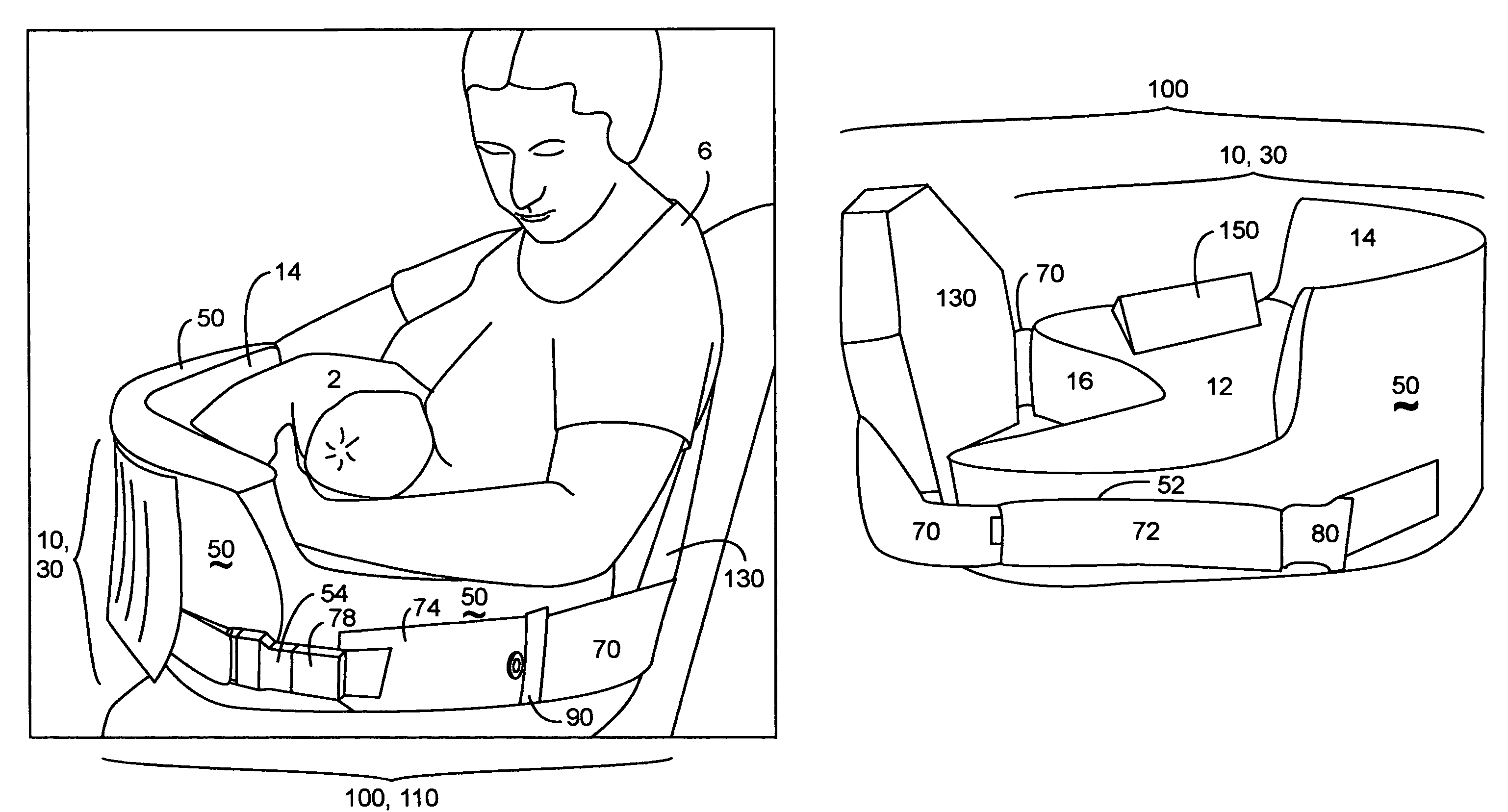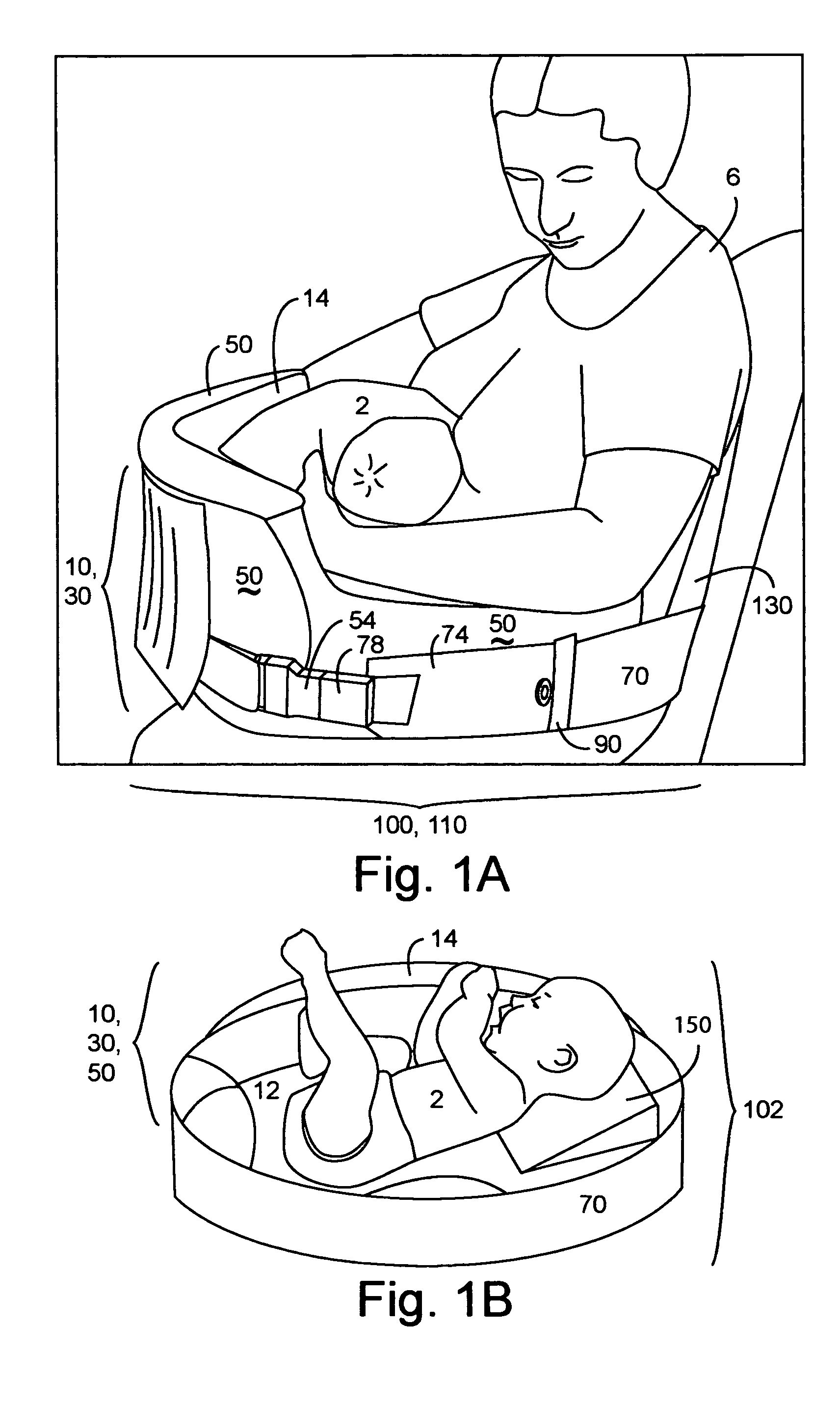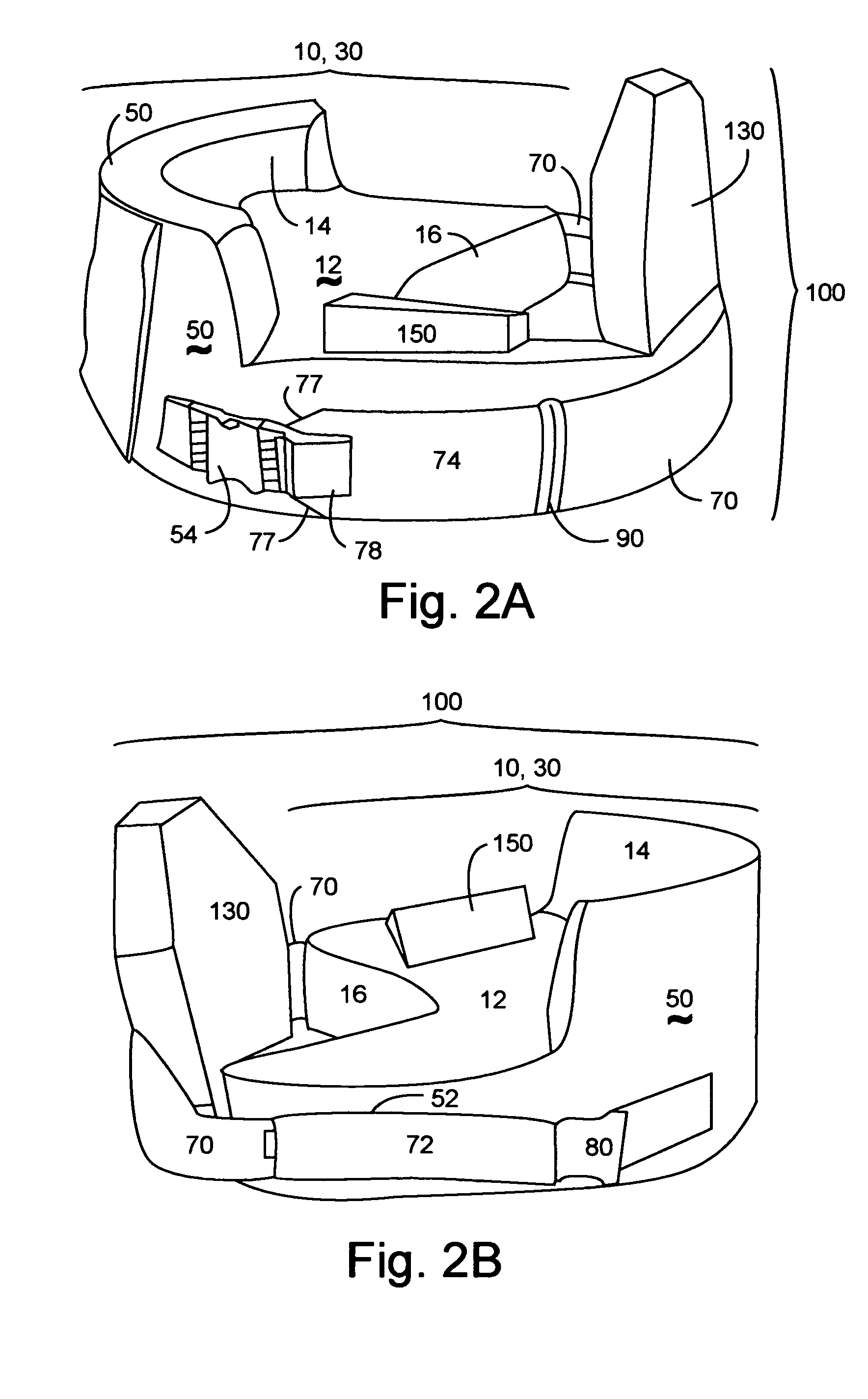Method and apparatus supporting babies being fed
a technology for feeding and infants, applied in the field of methods, can solve the problems of difficult feeding of infants, increased risk of breast problems, and increased risk of infection in mothers, and achieve the effect of limiting the motion of babies
- Summary
- Abstract
- Description
- Claims
- Application Information
AI Technical Summary
Benefits of technology
Problems solved by technology
Method used
Image
Examples
Embodiment Construction
[0067]
Table of Reference NumbersNumberDescriptionFIGS. 2baby or toddler 1A, 1B 6wearer, often nursing mother 1A, 9A to 9D 10ridged base 1A to 5B, 9B,11A to 12A 12platform zone 1B to 5B, 12A,12B 12A, 12Bplatform insert 5A, 5B 14ridge 1A to 4B, 8A, 9B, 12A, 12B 14A to 14Cridges 5A, 5B 16contour for wearer's waist 2A to 3A, 4A to 5B, 11A, 11C to12A 18horizontal contour of ridged base 10 3B 20support base matching the horizontal 3B, 7C to 7E,contour 18 8B, 9A, 9C,11A to 11F 20Asupport base medium firm layer 7C to 7E 20Bsupport base flexibly firm layer 7C to 7E 30covered unit 1A to 5B, 8A, 8B, 11A to 12A 32depth of support 3A, 3B, 4B,5A, 7C to 7E 34outside perimeter of covered unit 30 4A 36removal zipper of separable cover 50 4A 38joint side of the outside perimeter 4A 50separable cover for covered unit 30 1A to 2B, 4A, 5A, 8A to 8E, 9B, 11A to 12A 52fastener on a first end of the 2B, 8B, 11A toseparable cover 5011F 54fastener on a second end of the 1A, 2A, 11A toseparable cover 5011F 56...
PUM
 Login to View More
Login to View More Abstract
Description
Claims
Application Information
 Login to View More
Login to View More - R&D
- Intellectual Property
- Life Sciences
- Materials
- Tech Scout
- Unparalleled Data Quality
- Higher Quality Content
- 60% Fewer Hallucinations
Browse by: Latest US Patents, China's latest patents, Technical Efficacy Thesaurus, Application Domain, Technology Topic, Popular Technical Reports.
© 2025 PatSnap. All rights reserved.Legal|Privacy policy|Modern Slavery Act Transparency Statement|Sitemap|About US| Contact US: help@patsnap.com



